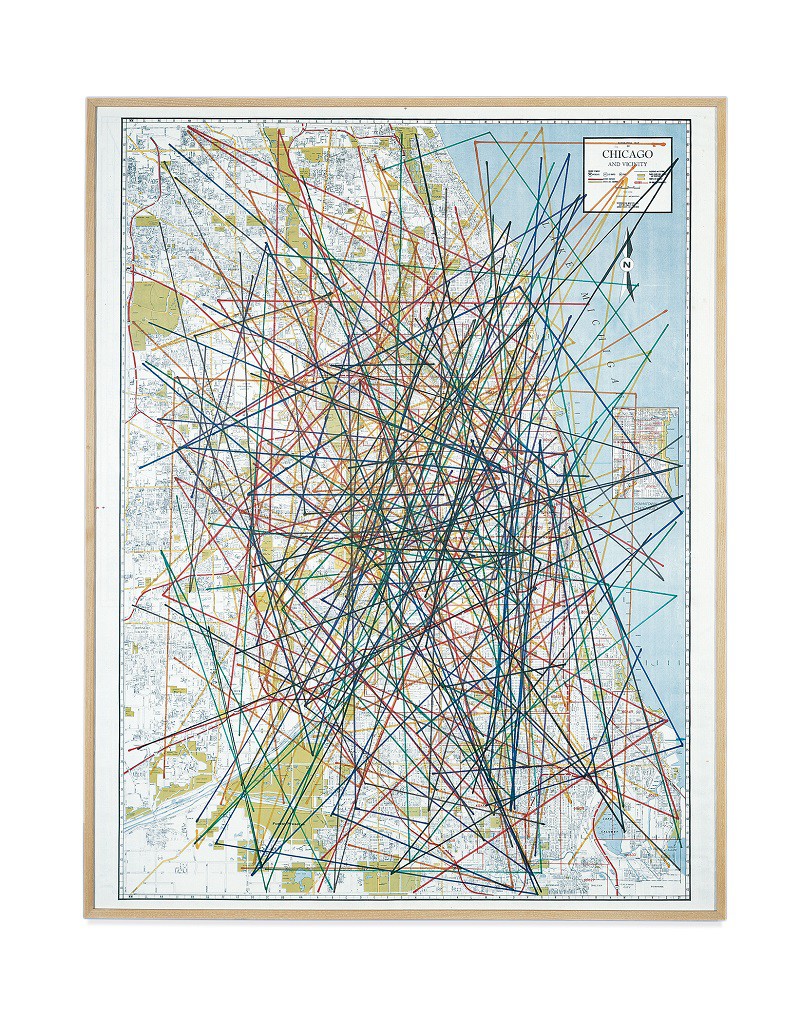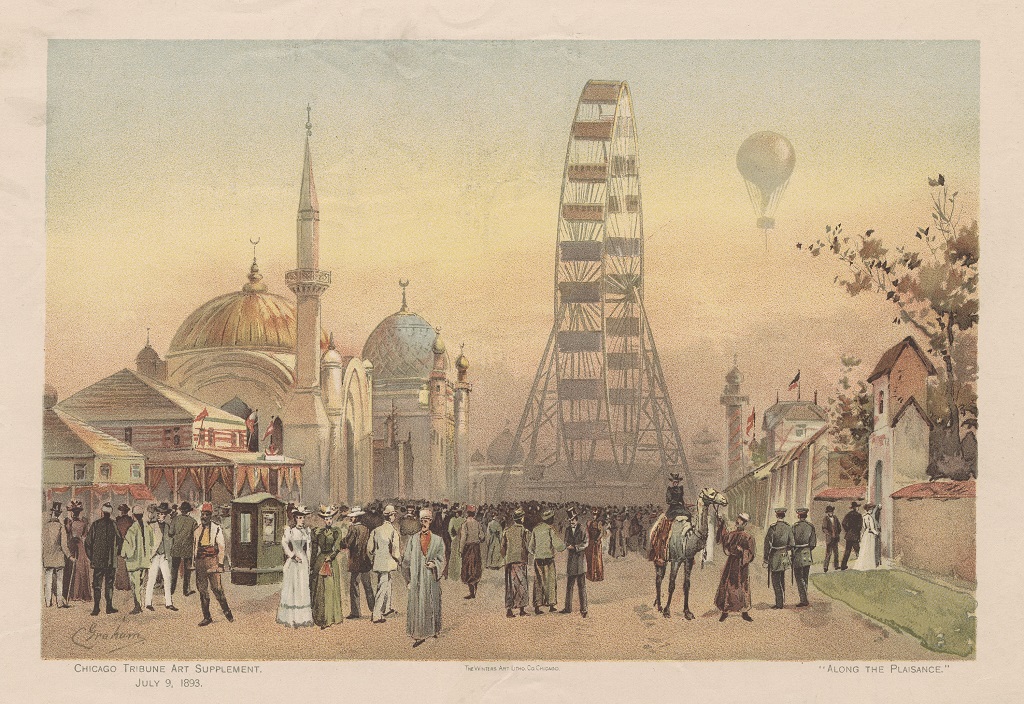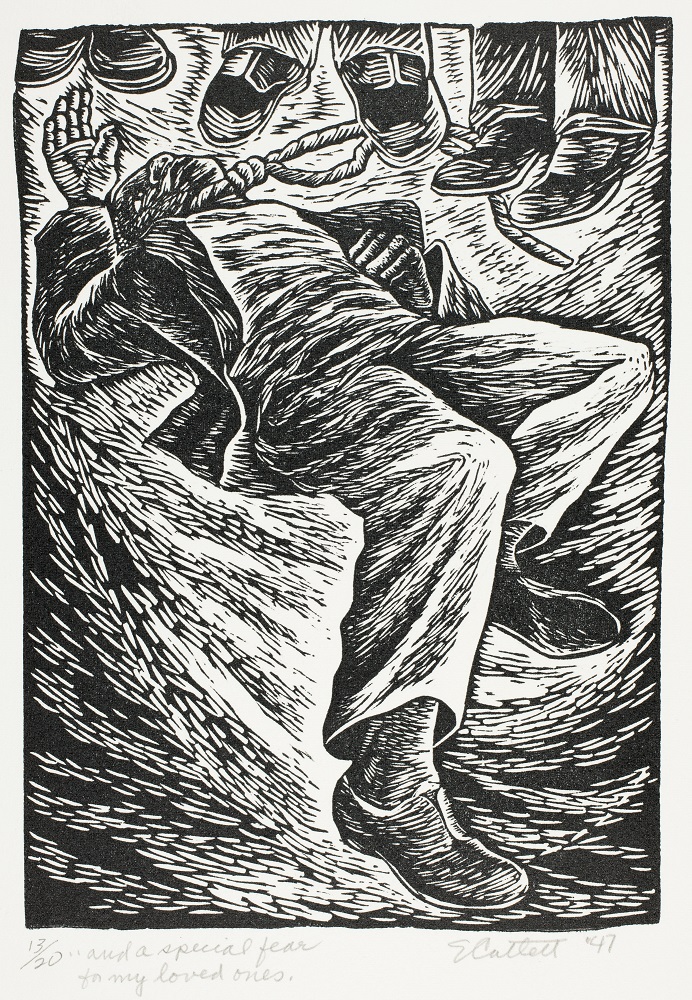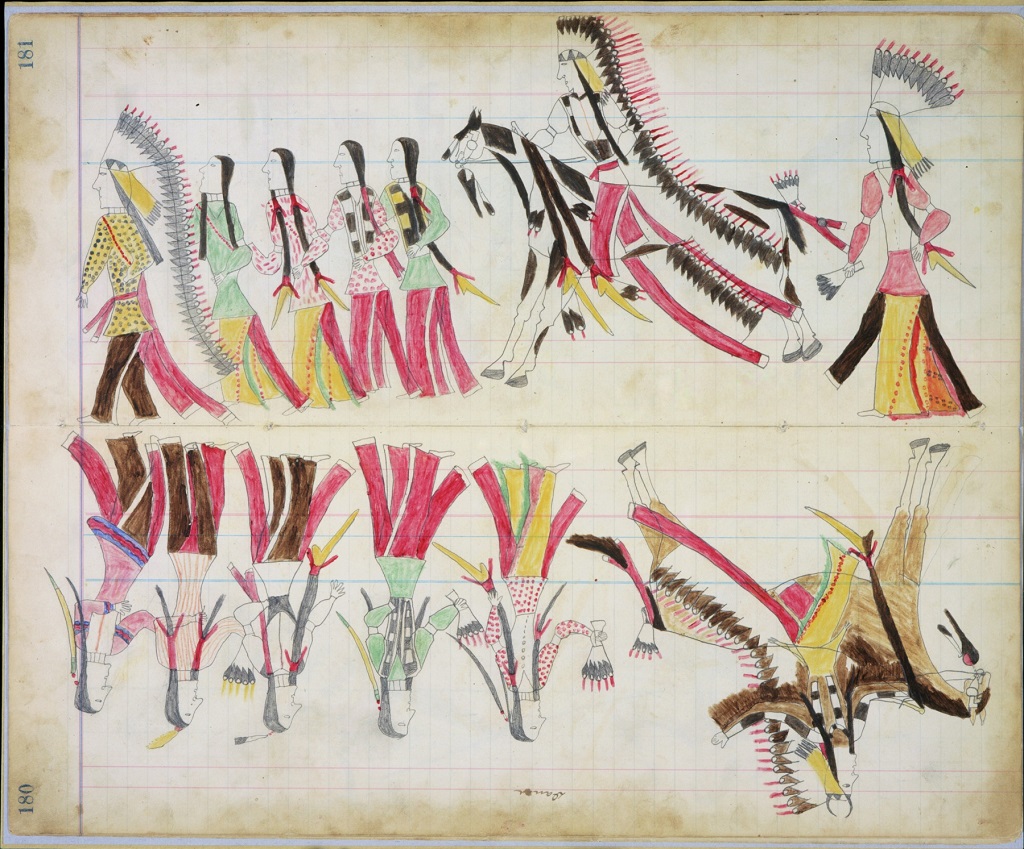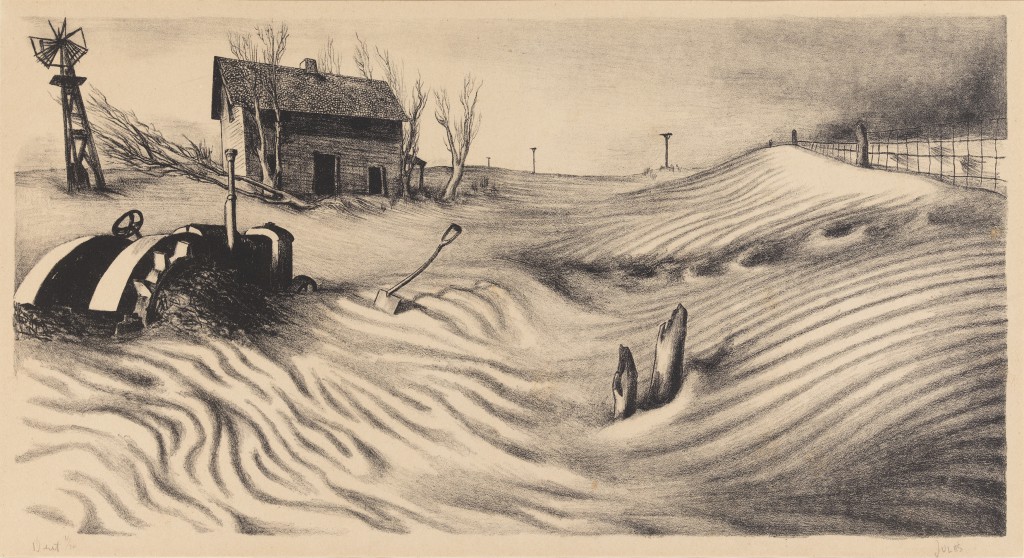Author:
Lauren C. Watkins, Museum of Contemporary Art Chicago
At first glance:
Describe this work of art. How do you think it was made? How does the artist use color to provide information? Does this map seem useful if you need directions? Why or why not?
Read to build knowledge:
Colored lines dart around the surface of this map. They crisscross the city and form a dense, tangled web that makes it difficult to pinpoint a location and figure out how to get there. So if this map is not designed to help us find a specific location, why would we use it?
The top right-hand corner of the map tells us what city it is supposed to show. It contains a box with the words “Chicago and Vicinity.” In the same box, you might also be able to see the scale of the map and a list of symbols. Just below this helpful key, a compass rose points north. To its left, notice the words “Lake Michigan,” another geographical clue that this is a map of Chicago. Floating in the lake, a small map enclosed in a box offers a snapshot of the downtown area.
Regardless of their length or shape, the colored lines on the map all seem to suggest pathways, routes, or connections between one place and another. The lines invite us to imagine moving through the city from one place or neighborhood to another, like a dance.
The artist John Cage transformed an ordinary map of Chicago into a work of art. He took a map and drew on it with colorful felt pens, connecting two, three, or four different points together with lines. Then he gave it a title: A Dip in the Lake: Ten Quicksteps, Sixty-two Waltzes, and Fifty-six Marches for Chicago and Vicinity. Quicksteps, waltzes, and marches are all different kinds of dances. In drawing the lines on the map, Cage was also playing the role of the choreographer, creating a series of movements to guide you through Chicago.
Quicksteps, waltzes, and marches are not only styles of dance but also styles of music. This connection, plus the fact that John Cage is perhaps best remembered as a composer of music, suggests that there may be a musical connection to this piece, too. Like many of his artworks, it is often referred to as a score, or a musical composition.
After producing the map, Cage published a separate document that outlined all of the “steps” by listing each street intersection where the lines on the map met. Having the precise sequence of addresses certainly would make the map easier to use. Still, Cage did not leave very specific instructions about what to do with this information. Instead, in a type-written message at the beginning of the nine-page list, Cage simply explains that this is: “For performer(s) or listener(s) or record maker(s).” A Dip in the Lake is many things at once–a map, a dance, a musical score, a performance waiting to happen, and an invitation to take a journey.
Analyze and Interpret:
- Why do you think John Cage left his artwork without clear instructions?
- In what ways are music and dance reflected in this work of art?
- Does the title explain John Cage’s intentions for making this artwork? What title would you chose for it? Explain your response.
Extension activities:
Untangle this complex image. Pick a line on the map. Find where it begins. Then follow where the line goes. You might notice that some lines connect two points on the map, while others lines link three or four different points.
- Create a map of your neighborhood, your school, or your walk or ride to school. How will your map invite viewers to embark on a unique journey of their own?
A Dip in the Lake: Ten Quicksteps, Sixty-two Waltzes, and Fifty-six Marches for Chicago and Vicinity references three different types of dances. Try out the following dance patterns and see how they might relate to John Cage’s map:
- Quicksteps involve a quick two-step motion
- Waltzes follow a three-step pattern: one-two-three, one-two-three
- Marches command four steps: one-two-three-four, one-two-three-four
One musician who saw John Cage’s map decided that he and a friend would travel to each location in A Dip in the Lake and audio record the sounds they found there. Over nearly two years they took photographs at each location to visually document the experience. The artwork gave him a reason to explore the city and notice things all along the way. Another artist (a choreographer) imagined a performance with hundreds of dancers on the streets of Chicago dancing swim-like movements to music playing through headphones.
- Describe how you would use John Cage’s map to make art (music, dance, painting, performance).
- For Chicago students: Visit some places on the map where the lines intersect and write down details of your journey. Who were you with? What did you see? How did you get there?

